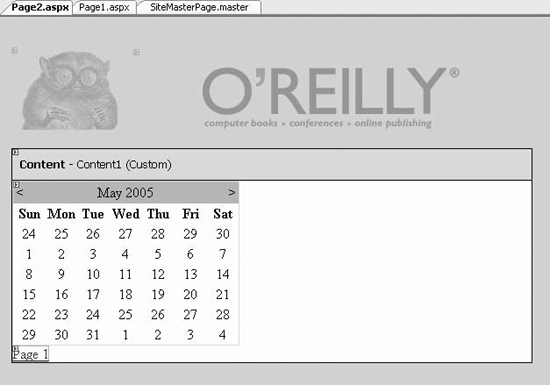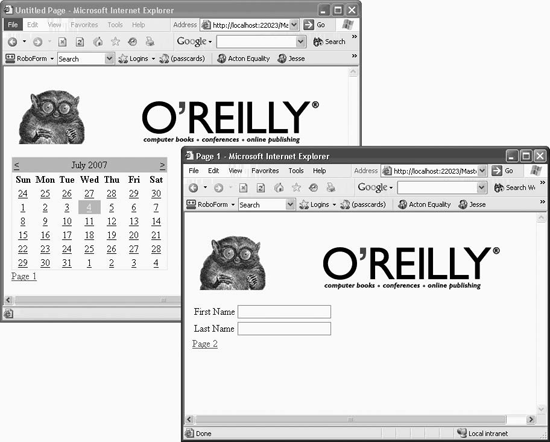Navigation
Web sites are becoming larger and more complex, and developers are called upon to provide navigational hints and menus to assist visitors avoid "getting lost" and to help visitors find all the features of the site.

Figure 10-6. Page2.aspx

Figure 10-7. Two pages sharing a common master page
The ASP.NET toolset includes a number of controls that facilitate creating both "bread crumbs" (how did I get to this page?) and site maps (how do I find that other page?).
Most of the time, you will want all of these features to be present on every page, and thus master pages are a great asset. If you change the site map or the control, you only have to update the master, and all the other pages are "updated" automatically.
Getting Started with Site Navigation
The most common way to create a site navigation data source is to create an xml file. It is possible to use a database, multiple xml files, and other sources, but for now let's keep things simple.
To begin, create a new web site called SiteNavigation . Right-click on the web site in Solution explorer and choose Add New Item. The Add New Item dialog box appears. Choose Site map and verify that the name provided is Web.sitemap , as shown in Figure 10-8.
Figure 10-8. Creating the sitemap
When you click the button, Add Web.sitemap is added ...
Get Programming Visual Basic 2005 now with the O’Reilly learning platform.
O’Reilly members experience books, live events, courses curated by job role, and more from O’Reilly and nearly 200 top publishers.

